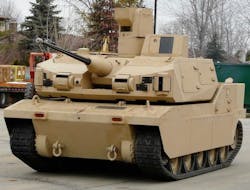Armored combat vehicles experts seek to determine if expensive unmanned tanks are too expensive to lose
WASHINGTON – Unmanned vehicles are supposed to spare humans from work that involves the 3 D’s: dull, dirty and dangerous -- but it is the “dangerous” part that is the most emotive reason for the coming wave of robot tanks. Forbes reports. Continue reading original article
The Military & Aerospace Electronics take:
17 Feb. 2021 -- Machines are expensive, however; a manned M-1 Abrams costs $6 million, and an F-35 fighter almost $100 million. Hence the attraction of unmanned combat robots that cost less and spare the lives of friendly soldiers. But a wargame conducted by a U.S. think tank raises a troubling question: what if the robots themselves are too precious to lose?
RAND Corp. used a tabletop tactical-level wargame to examine how human commanders would use robot tanks -- also known as Robotic Combat Vehicles (RCVs) -- in battle.
In particular, the wargame delved into a potential generational shift: one scenario assumed a friendly force equipped with robot vehicles, which are remotely controlled by human operators. A second scenario, set in the 2030s, assumed fully autonomous AI-controlled RCVs. The enemy (Red) forces in both scenarios were equipped with conventional armored combat vehicles.
John Keller, chief editor
Military & Aerospace Electronics
